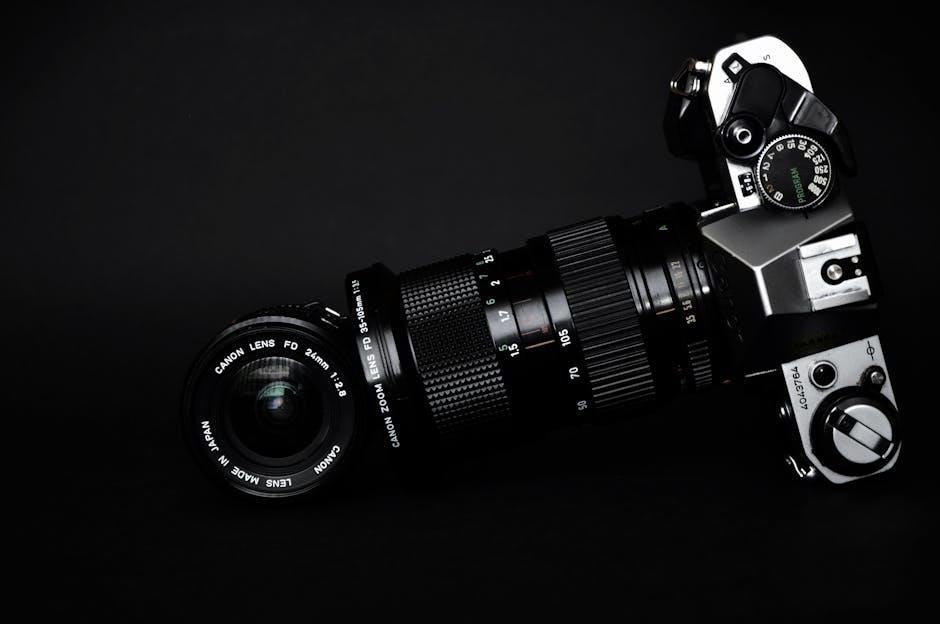Davis Vantage Pro2 Manual: A Comprehensive Guide
Welcome to the comprehensive guide for your Davis Vantage Pro2 weather station! This manual provides everything from initial setup to advanced troubleshooting, ensuring optimal performance. It covers the Integrated Sensor Suite (ISS), console operation, and WeatherLink software connectivity.
The Davis Vantage Pro2 is a sophisticated weather station designed for accurate and reliable environmental monitoring. This manual serves as your comprehensive resource for understanding, installing, and maintaining your Vantage Pro2 system. Whether you’re a seasoned weather enthusiast or a first-time user, this guide will walk you through every aspect of the station.
From setting up the Integrated Sensor Suite (ISS) to navigating the console interface and connecting to the WeatherLink software, each section is crafted for clarity. The Vantage Pro2 offers features like real-time data updates every 2.5 seconds, a unique forecasting algorithm, and options for both wireless and wired configurations. This manual covers both, including cable length considerations for wired setups, ensuring optimal performance.
Furthermore, you’ll find detailed instructions on clearing weather data, changing transmitter IDs, and troubleshooting common issues. Should you encounter any difficulties, information for contacting Davis Technical Support is readily available. By following this guide, you’ll unlock the full potential of your Vantage Pro2.

Understanding the ISS (Integrated Sensor Suite)
The Integrated Sensor Suite (ISS) is the core of your Vantage Pro2, housing crucial sensors. Learn about its components, functions, and proper assembly for accurate weather data collection.
ISS Components and Functions
The Integrated Sensor Suite (ISS) is the central hub for data collection in the Davis Vantage Pro2 system. Its primary components include the anemometer, which measures wind speed and direction, and the rain collector, meticulously designed to accurately record precipitation. The temperature and humidity sensors provide essential atmospheric readings, contributing to a comprehensive weather overview.
Each component plays a vital role in delivering precise weather information. The anemometer’s readings are crucial for understanding wind patterns, while the rain collector’s data informs about rainfall intensity and accumulation. The temperature and humidity sensors work in tandem to provide insights into atmospheric conditions, influencing weather patterns and forecasts.
Properly functioning ISS components ensure the reliability of your weather data. Regular maintenance and careful handling of these components are essential for maintaining accuracy. Understanding the function of each part enhances your ability to interpret weather data and troubleshoot any potential issues effectively.
Wireless ISS Assembly
Assembling the wireless Integrated Sensor Suite (ISS) for your Davis Vantage Pro2 involves careful attention to detail. Begin by inserting the foam pieces correctly to ensure stability. Connect the anemometer securely to the ISS, ensuring proper alignment for accurate wind readings. Pay close attention to the sensor suite connections to avoid any loose wires.
The wireless assembly allows for flexible placement of the ISS, away from obstructions that could interfere with data collection. This is especially beneficial for optimizing wind and rain measurements. Ensure the wireless signal is strong and unobstructed for reliable data transmission to the console.
Refer to the detailed instructions in your Vantage Pro2 manual for specific steps and diagrams. Correct assembly is critical for the proper functioning of your weather station. Take your time and double-check each connection to guarantee accurate and consistent weather data.

Console Operation and Features
The Vantage Pro2 console offers a user-friendly interface to view and analyze weather data. Explore its features for detailed insights, including historical trends, alerts, and customizable display options.
Navigating the Console Interface
The Davis Vantage Pro2 console boasts a clear and intuitive interface, designed for easy access to a wealth of weather information. The primary display presents current conditions, including temperature, humidity, wind speed, and rainfall. Utilize the arrow keys to cycle through different data screens, each offering a specific set of readings and historical data.
The console’s menu system, accessible via the dedicated buttons, allows you to configure various settings. This includes setting alarms, calibrating sensors, and adjusting display preferences. Understanding the menu structure is crucial for customizing the console to your specific needs and preferences. Take time to familiarize yourself with the different menu options and their corresponding functions.
The console also features dedicated buttons for quick access to frequently used functions, such as viewing daily highs and lows, and accessing historical data. The “Graph” button provides a visual representation of weather trends over time, allowing you to quickly identify patterns and anomalies. The “Done” button confirms selections.
Clearing Weather Data on the Console
Maintaining accurate weather records sometimes requires clearing existing data on your Davis Vantage Pro2 console. This might be necessary after a power outage, sensor replacement, or simply to start fresh with a new observation period. The process for clearing data is straightforward, but it’s essential to understand what data you’re erasing before proceeding.
The console allows you to clear various types of data independently. You can reset daily, monthly, or yearly rainfall totals, temperature extremes, and wind data. Before clearing any data, ensure you have backed up any information you wish to retain, particularly if you’re using WeatherLink software for data logging.
Refer to your Vantage Pro2 Console User Manual for specific instructions on clearing each type of weather data. Typically, this involves navigating to the setup menu and selecting the appropriate reset option. Be cautious when clearing data, as this action is irreversible. Confirm your selection before proceeding to avoid accidental data loss. After clearing, the console will begin recording new data from the current time forward.

Installation and Setup
Proper installation is crucial for accurate weather data. This section guides you through connecting the ISS to the console, considering cable lengths, and ensuring optimal sensor placement for reliable readings.
Connecting the ISS to the Console (Wired)
For wired Vantage Pro2 systems, establishing a secure connection between the Integrated Sensor Suite (ISS) and the console is essential for transmitting weather data. Ensure that you have the appropriate cable, typically a 4-conductor cable included with your wired Vantage Pro2 station. Begin by firmly inserting one end of the cable into the designated port on the back of the console unit. The port is usually labeled “ISS” or “Sensor Suite”.
Next, locate the corresponding port on the ISS. This port is also clearly marked and designed to receive the cable connector. Carefully insert the other end of the cable into the ISS port, ensuring a snug and secure fit. A properly connected cable will ensure uninterrupted data flow.
After physically connecting the cable, power on both the console and the ISS. The console should automatically begin receiving and displaying weather data from the ISS. If you encounter any issues, double-check the cable connections at both ends to ensure they are properly seated. Incorrect connections can prevent data transmission.
Maximum Cable Length Considerations
When installing a wired Davis Vantage Pro2 system, understanding cable length limitations is crucial for reliable data transmission. Davis Instruments specifies a maximum cable length of 1000 feet (305 meters) when using their recommended cables between the Integrated Sensor Suite (ISS) and the console. Exceeding this length can lead to signal degradation, resulting in inaccurate readings or complete loss of communication between the ISS and the console.
Several factors can impact the effective cable length, including cable quality, environmental conditions, and potential interference sources. Using non-Davis approved cables may further reduce the maximum allowable length. To mitigate potential issues, ensure that the cable is properly shielded and protected from physical damage or exposure to extreme temperatures.
If a longer distance is unavoidable, consider using a wireless Vantage Pro2 system or exploring signal boosting solutions. However, these alternatives may introduce additional complexities and potential points of failure. Always verify the signal strength and data accuracy after installation, particularly when approaching the maximum cable length limit.

Troubleshooting and FAQs
Encountering issues with your Vantage Pro2? This section addresses common problems and frequently asked questions. Find solutions for transmitter ID conflicts, sensor malfunctions, and connectivity difficulties, ensuring smooth operation.
Changing the Transmitter ID
The default Transmitter ID for both the Integrated Sensor Suite (ISS) and the Vantage Pro2 console is set to 1. This default setting typically works without issue for most users. However, situations may arise where changing the Transmitter ID becomes necessary, particularly if you have multiple Vantage Pro2 systems operating in close proximity.
Interference between systems can occur if they share the same Transmitter ID. To avoid such interference and ensure accurate data transmission, you’ll need to assign a unique ID to each system. Before altering the Transmitter ID, consult your Vantage Pro2 console user manual for detailed instructions specific to your model.
Incorrectly changing the ID can disrupt communication between the ISS and the console. Remember to change the Transmitter ID on both the ISS and the console. Davis Technical Support can provide guidance if needed.
Contacting Davis Technical Support
If you encounter any issues with your Davis Vantage Pro2 weather station that you cannot resolve using the troubleshooting steps outlined in this manual, or if you have specific questions regarding the installation or operation of your system, Davis Technical Support is available to assist you.
Their team of experts possesses in-depth knowledge of the Vantage Pro2 and can provide valuable guidance and solutions to address your concerns. Before contacting them, it’s helpful to gather relevant information about your station, such as the model number, serial number, and a detailed description of the problem you’re experiencing. This will enable the support team to assist you more efficiently.
You can reach Davis Technical Support by phone at (510) 732-7814. Be prepared to clearly explain the issue you’re facing and any troubleshooting steps you’ve already taken. The support team is committed to ensuring your Vantage Pro2 operates correctly.
WeatherLink Software and Data Logging
Unlock the full potential of your Vantage Pro2 with WeatherLink software. Connect to your computer for comprehensive data logging, analysis, and sharing capabilities. Explore historical trends and advanced reporting.
Connecting to a Computer
To connect your Davis Vantage Pro2 console to a computer, you will need the WeatherLink data logger and software. This combination allows for extensive data analysis and long-term storage. Begin by installing the WeatherLink software on your computer following the provided instructions.
Once the software is installed, connect the data logger to the console using the appropriate cable. Then, plug the data logger into a USB port on your computer. The software should automatically detect the connected data logger.
If the software does not automatically detect the data logger, you may need to manually select the correct communication port within the software settings. Refer to the WeatherLink software manual for detailed instructions on configuring the connection.
After establishing a connection, you can begin downloading weather data from the console to your computer. This allows you to view detailed weather information, create custom reports, and archive historical data for future analysis.
Regularly back up your WeatherLink data to prevent data loss. Enjoy the extended capabilities WeatherLink offers!





